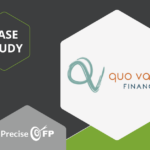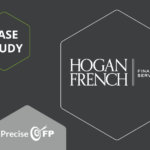Just as a seasoned sailor knows the importance of navigating rough waters with skill and precision, financial advisors must navigate the regulatory seas with finesse. In 2024, the SEC’s focus on advisor recommendations and fiduciary responsibility is akin to charting a course through ever-changing currents. It’s vital for advisors to understand these regulatory tides, stay compliant, and ensure their clients’ financial journeys remain on course. Join us as we gather insights from industry experts on how to navigate these regulatory waters effectively. Discover how adaptable workflows and processes are essential for staying in sync with the evolving landscape dictated by governing bodies.
The SEC is Watching Client Recommendations in 2024
Today, advisors have many options for products and accounts they can recommend for their clients. However, not every type of advisory account is best for every client. The SEC has specific requirements for making timely recommendations. At the heart of it is remembering your fiduciary responsibility and duty of care and loyalty — an advisor must serve the best interest of their clients.
The challenge for advisors is that investment recommendations aren’t often black and white. With so many factors to consider, advisors must use their judgment to make the right recommendation in the moment.
Experts say to start with cost because it tends to be the easiest for clients to understand. Knowing the ins and outs of your client’s finances can help determine what type of products and accounts align with their willingness to pay. If an advisor is always recommending the most expensive product to clients or the one that earns them the highest commission, it is sure to raise a red flag with the SEC. Be sure to document your processes and the factors you considered when making a recommendation, especially around cost. That way, when the question comes up, you have notes to show that the recommendation was in the client’s best interest.
Creating a Best Interest Workflow
How can advisors ensure they are working in a client’s best interest? It requires the work of everyone in the firm. That doesn’t mean moving the problem or responsibility from one end of the process to another but breaking it down so that best interest is considered throughout the entire lifecycle.
One of the SEC’s exam priorities is that investment advice given to clients about products, investment strategies, and account types is done in their best interest. To meet this requirement, consider the entire workflow, starting with account type to product type and then disclosure and documentation.
- Account type. Look at various account types to meet your client’s goals, including rollovers like traditional and Roth IRAs and brokerage, advisory, and direct mutual fund investing.
- Product type. From there, assess the costs and available alternatives, including mutual funds, ETFs, and annuities. These can help meet the SEC’s Reasonably Available Alternative requirements.
- Disclosure and documentation. Integrate documentation, disclosure, and supervisory support so clients have all the information they need and know the risks and potential conflicts of interest.
Setting Your Firm Up for Success
Knowing the SEC’s priorities is one thing, but preparing your firm to be compliant and thriving is another. It starts by keeping the fiduciary responsibility at the top of everyone’s mind at the firm, from advisors to back-office staff.
Leading finance experts recommend three ways to set your firm up for success:
- Have written policies and procedures in place on how to make recommendations. Establish guidelines and clearly defined internal processes so that client recommendations are consistent. This could be a checklist of questions you ask, factors to consider, or worksheets to use. Clear policies ensure you deliver a consistently high-quality experience to clients and follow SEC regulations.
- Remember disclosures. Every recommendation and new account comes with disclosures. Stay current with disclosure requirements to disclose the correct information to clients and the SEC.
- Maintain books and records. Clear records make it easier to stay up-to-date on each client and prove your processes to the SEC. However, as your firm grows, this process can be daunting. Automate wherever possible, using a cloud-based service like Docupace, to ensure your records are compliant and more accessible.
Ultimately, advisors and firms that take the steps necessary to understand client’s needs, risk tolerance, and financial goals will be able to provide relevant recommendations and fulfill their fiduciary responsibility. Although the SEC’s priorities may evolve in 2024, establishing a strong advisor-client relationship and keeping solid records will set your firm up for great success.
To streamline your compliance processes, turn to PreciseFP, a trusted solution used by many financial professionals. Our platform empowers you to deliver disclosures efficiently and maintain client documents with ease. Interested in learning more about how PreciseFP can help you assess risk appetite and meet regulatory requirements? Reach out to us via the chat icon or sign up for a free trial today.







